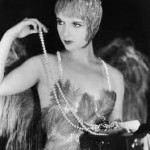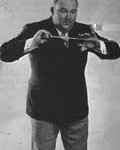The jazz audience can be described by its parts: hip, participatory young artist/musicians, less experienced and cost-conscious but willing social butterflies, mid-aged and older cultural omnivores and dull-but-desirable comfort seekers, according to a segmentation study sponsored by the Jazz Audience Initiative.

Some of this has been reported by NPR’s A Blog Supreme as “Actually Useful Information About the Jazz Audience” (thanks, Patrick Jarenwattananon), but these categories which the study used to characterize the varied behavior of the music’s purported audience slivers for discussion at a “jazz leadership” convening last week by Columbus, Ohio’s Jazz Arts Group have not previously been publicized.I was privileged to be in the room as Alan S. Brown, researcher and
 principal of WolfBrown, the segmentation study’s author, presented a chart-packed slide show breaking out research findings for the benefit of a powerful if incomplete cross-section of U.S. jazz organizations. Also at the meeting: representatives from Jazz at Lincoln Center, Monterey Jazz Festival, Manchester Craftsmen’s Guild Jazz, AllAboutJazz.com, Chamber Music America, the Jazz Education Network, Jazz St. Louis, University of Michigan’s University Musical Society, Ohio State University’s Wexner Center for the Arts as well as the Jazz Artists Group’s flagship Columbus Jazz Orchestra and Ben Cameron, program director for the arts of the Doris Duke Charitable Foundation, which has funded the Jazz Audience Initiative at the level of $200,000 over 21 months.
principal of WolfBrown, the segmentation study’s author, presented a chart-packed slide show breaking out research findings for the benefit of a powerful if incomplete cross-section of U.S. jazz organizations. Also at the meeting: representatives from Jazz at Lincoln Center, Monterey Jazz Festival, Manchester Craftsmen’s Guild Jazz, AllAboutJazz.com, Chamber Music America, the Jazz Education Network, Jazz St. Louis, University of Michigan’s University Musical Society, Ohio State University’s Wexner Center for the Arts as well as the Jazz Artists Group’s flagship Columbus Jazz Orchestra and Ben Cameron, program director for the arts of the Doris Duke Charitable Foundation, which has funded the Jazz Audience Initiative at the level of $200,000 over 21 months.
The study itself, described by project director Christy Farnbauch as a foot thick if it were to be printed, will instead be posted in its entirety online in an estimated six weeks; some of the pie charts and figures showing that the jazz audience is a fractious and/or many splendored thing were unveiled at a town-hall meeting at the Association of Performing Artists convention in New York City last January. Data compiled by sampling ticket buyers of a bulging handfull of major jazz venues plus “potential” jazz fan/ticket buyers living in Central Ohio arrive at several conclusions which seem intuitive once they are expressed, yet easier to label than act upon. Among them:
- Audiences prefer to hear jazz in small venues affording opportunities to socialize
- Jazz has entry points from other musics (classical, rock, blue grass) so booking jazz bands with other ensembles playing in different genres is a way to attract otherwise disengaged audiences
- Â Some listeners enjoy and participate in “contextualization” (such as pre- and post-concert discussions) but others don’t, or prefer to lurk silently
- Jazz fans are most motivated to buy tickets when the musician is someone they want to hear . . .
- Young audiences defy genre or style restrictions (so they claim) and just like whatever they like
- People are most receptive to music recommendations from friends or family, tend to like what they’ve heard recently, and are exposed to a lot of newly released music on the radio . . .
Yes — but the point of this convening was to urge attendees to consider the finding’s implications especially in regards to jazz presentation, and to come up with suggested practices with the twined goals of growing and deepening the jazz audience, and selling tickets to specific jazz events. A glimpse of the data reveals how at odds those goals might be in the minds of traditional presenting organizations, since the fresh and energized jazz audience wants kinetic experiences in intimate settings especially if access is cheap (or better yet, free), while the established yet dwindling crowd isn’t all that esthetically adventurous but enjoys a nice night out on the town and has the money to pay for it.
For an enterprise like the Columbus Jazz Orchestra, a paradox revolves around its investment in a swing-oriented though stylistically flexible big band, performing a popular but paid-ticket outdoor series at the Columbus Zoo and also a concert series at two relatively large historic, refurbished theaters. Programming tries hard to appeal across a spectrum of Columbus’s 787,000 population; in 2011-2012 there are shows focused on banned and controversial tunes, on guest artist Kevin Eubanks, on winter holiday favorites, on the music of Ray Charles, on a collaboration with a ballet company, a commission for trombonist Wycliff Gordon, the ’20s sounds of the Cotton Club, “the legends of Soul” and the Harmony Project (a choir). They broadcast some concerts on WOSU, the Ohio State University’s classical fm station.
But to enlarge and improve the audience experience and sell more tickets should the Columbus Jazz Orchestra produce more off-site events featuring unaffiliated musicians or imported groups of non-big band style? Can it partner more with classical, hip-hop or blue grass ensembles, have more multi-media collaborations, offer enlightening (no-charge?) meet-ups and talks before big deal concerts or after them — in person or online? Should it incentivize ticket sales with two-for-one deals, coupons for extra values, hosted jam sessions, “compromised” curatorial standards? If these moves get the CJO into the mix, will that mix support it?
Some of the larger jazz institutions — the Monterey Jazz Festival, say, or Jazz at Lincoln Center — can ignore the report’s findings, as they operate under unique conditions. However, the problem for the small venues — whether non-profit or frankly commercial — that have the hot action rising audiences want is that their rents are going up, overhead for musicians’ travel and lodging puts out-of-towners out-of-price-range, old forms of marketing and promotion have failed while new forms are not yet in place. Jazz clubs, never very stable businesses, are drying up by the dive-full. They can’t produce off-site, they don’t have $ for enrichment programs, they might do alright from food and booze charges but not if they get serious about the music — unless they have independent funding sources like John Zorn’s The Stone in Manhattan, or ongoing funding campaigns like Philadelphia’s floating Ars Nova Workshop or schedules that appeal to well-heeled patrons who want nostalgia or traditionalism, draw a lot of tourists  (like Preservation Hall in New Orleans) or have favorable circumstances like being located inside a hotel (the Cafe Carlyle in NYC, Scullers Jazz Club in Boston).
There’s no one-size-fits-all prescription for “solving” the puzzle of attracting the right audience for every venue, and the survey’s categories are useful only to identify that there are several audiences within the amorphous community that identifies itself with jazz. Data can be interpreted in many ways, and the more people see the Jazz Audience Initiative’s survey results, the more discussion will ensue.
Experienced jazz fans will recognize the segmentations and tensions between them from past eras. Here are the flappers who liked “hot jazz”  and the businessman who preferred Paul Whiteman’s
and the businessman who preferred Paul Whiteman’s  bounce. Swing players vs. beboppers vs. moldy figs — the cool school compared to hard bop a la the Jazz Messengers — “free jazz” fighting neo-conservatism. The mostly male hipster musicians and mostly female social butterflies should find each other and popularize certain informal, dark venues — until they mature enough to settle together and tend their recording collections (plus the kids), then eventually become old folks who just want to hear what they liked when they met. Having survey distinctions about what each segment’s preferences are may help presenters narrow in on what they need to do to get those segments to their jazz offerings. Until all the Jazz Audience Initiative’s data is offered for all comers to peruse, the wise jazz presenter will depend on their ears to the ground.
bounce. Swing players vs. beboppers vs. moldy figs — the cool school compared to hard bop a la the Jazz Messengers — “free jazz” fighting neo-conservatism. The mostly male hipster musicians and mostly female social butterflies should find each other and popularize certain informal, dark venues — until they mature enough to settle together and tend their recording collections (plus the kids), then eventually become old folks who just want to hear what they liked when they met. Having survey distinctions about what each segment’s preferences are may help presenters narrow in on what they need to do to get those segments to their jazz offerings. Until all the Jazz Audience Initiative’s data is offered for all comers to peruse, the wise jazz presenter will depend on their ears to the ground.

